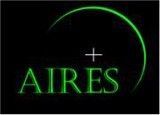
-
StatusCompleted
-
Status date2008-10-23
Low-cost earth sensors (ES) currently do not exist on the market due to the lack of a suitable sensing concept. Their availability would allow earth sensors to be used in new scenarios and to improve system reliability by providing a low-cost back-up sensor which could be used for applications where neither milli-degree accuracy nor operation at high angular rates are required, but where low cost is essential and lower (about 1 – 5°) accuracy is acceptable.
The objectives of this project are to demonstrate the feasibility and reliability of using low-cost detectors to sense the atomic oxygen airglow of the atmosphere from space, and estimate the performance of a low-cost earth sensor that uses this concept. A breadboard has been designed, manufactured and tested to confirm that this concept is viable. An array of 32x32 & 128x128 SPADs (Single Photon Avalanche Diodes) has been designed and fabricated to serve as a possible detector for this Earth Sensor.
The key issues to be investigated were:
- Determining (from existing satellite data) the photon flux and flux variation at 762nm,
- The feasibility of a very compact optical system capable of imaging the Earth at this wavelength,
- The feasibility and requirements on a narrow band filter centred at 762 nm,
- The development of an algorithm to determine the Earth vector based on expected appearance at 762 nm,
- Performance of a radiation tolerant SPAD imaging array,
- Expected recurrent cost per unit.
The proposed system is expected to have a recurring cost a factor of 3 lower than currently available Earth Sensors, to be more compact, and draw less power.
- Sensing the Earth using the visible band (oxygen airglow at 762 nm) rather than the LWIR band (14 to 16 µm) offers several advantages including much lower cost detectors, no need for cooling, a significantly relaxed thermal design, simpler optics, higher sensitivity and hence lower cost.
- The low-light detector based on arrays of single photon avalanche diodes (SPAD) or on low-noise APS (active pixel sensors) enables the ES to operate at night and day, over a wide temperature range, with a very compact optical system (aperture of 9 mm, focal length of 11 mm) and no scanning elements.
- A modular design allows designing similar instruments for GEO and LEO applications, thus reducing the development cost by using the same wavelength band, the same detector technology, the same optics, the same power and data interfaces and similar algorithms. The main difference between the instrument used in a GEO or a LEO is the optical geometry: whereas a single tube design will be used in GEO, a triple-tube concept will be used for LEO to provide a larger FOV. For both geometries, the volume of the instrument will be minimized, its mass will not exceed 1 kg for a LEO- and 600 g for a GEO-instrument, and the power consumption is less than 5 W.
LEO Instrument
GEO Instrument
Cross-section of GEO Instrument
The Earth appearance at 762 nm was modelled over different seasons. This model will allow the optics and the detector to be sized. Algorithms were developed to determine the Earth vector from expected images. Computation power was estimated.
A 128x128 SPAD detector array was be designed to be radiation tolerant. It was be fabricated at a CMOS foundry. Its performance as an imaging system was characterized (dark count rate, sensitivity, etc.), as will the effect of TID (Gamma) and 11 MeV and 60 MeV protons. A control circuit for the SPAD array was designed and fabricated.
A preliminary mechanical and electrical design of the ES was developed. The optics and filter were designed, and the feasibility of the filter manufacturing was investigated. A mass power and volume budget was be established.
A laboratory breadboard was built to: display simulated images of the Earth as seen from GEO, image those Earth picture with one or more candidate detectors, and test the performance of the Earth Centre finding algorithms as a function of temperature and Earth appearance conditions. A development plan has been written.
The project is completed.
- An Earth appearance model at 762 nm was developed,
- A first conceptual design of the Earth sensor was completed, including mechanical, electrical and optical design,
- The filter was designed and its feasibility established,
- A breadboard was built to test the performance of representative optics and detectors on simulated images of the Earth. The algorithms correctly determined the Earth vector with the expected accuracy,
- SPAD arrays (128x128 and 32x32) were designed with radiation tolerant design rules, and were fabricated,
- The 32x32 SAPD array was found to operate corerctly after gamma doses of 42 krad,
- The SPAD control boards were designed, built and programmed,
- The development plan and cost estimates were written.






